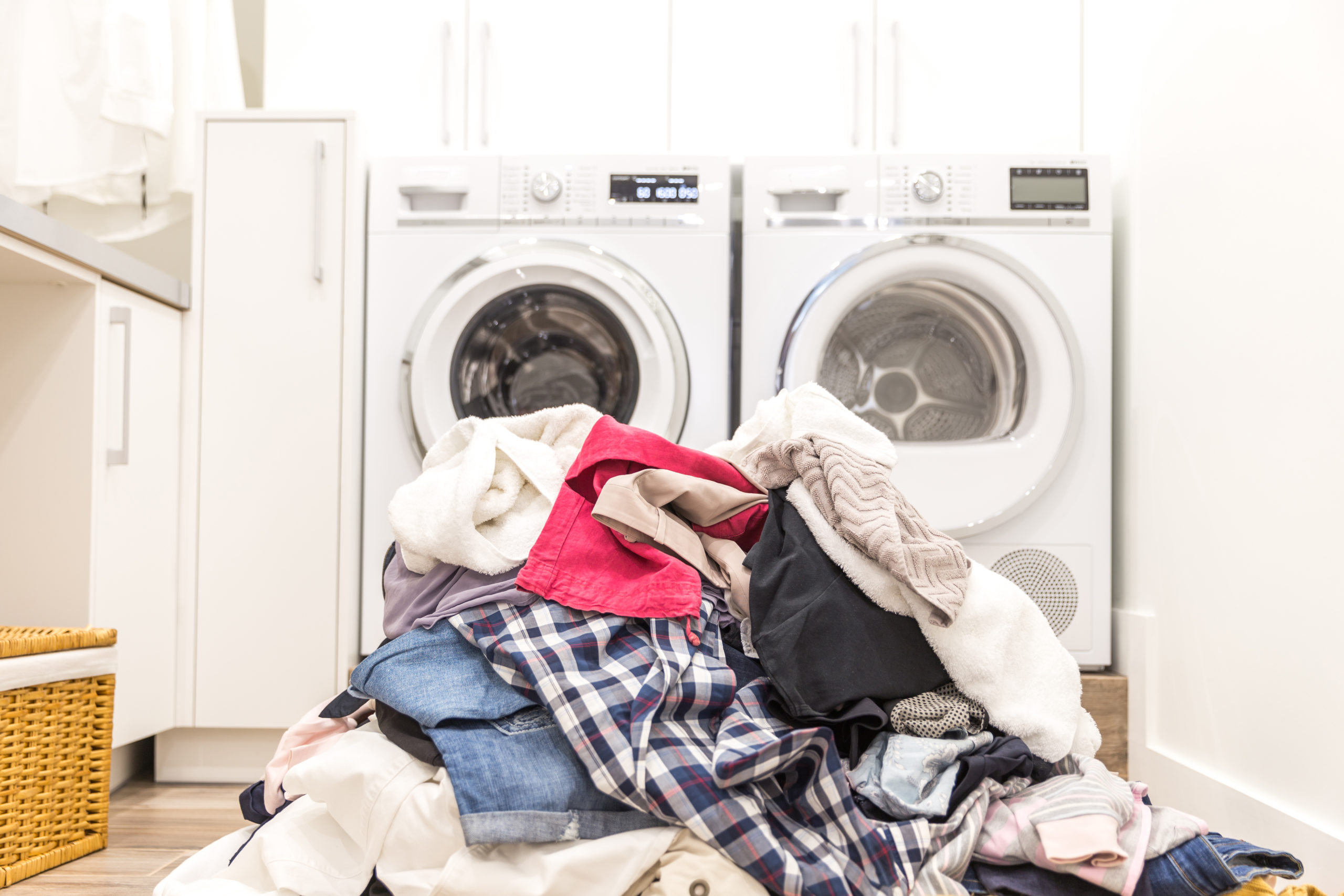Sorting Laundry: Is It Really Necessary?
Do you separate your clothes into piles before doing your laundry? Or do you throw everything in the wash together and get on with your day? Although sorting has long been the status quo, “new and improved” laundry detergents, along with advances in washer technology, have sparked a debate: Is sorting still important, or is it an unnecessary holdover from a bygone era?
Although you can often get away with doing a combo load, we don’t recommend it. One stray red sock and all your whites may come out pink. Even a pair of new indigo jeans can bleed and turn your lights a dingy, greyish hue.
And it’s not just color transfer that can cause damage . . .
Due to the friction created as garments rub against each other in the washer and dryer, items made from heavier fabrics (like denim and towels) can damage your more delicate items (like lingerie and leggings). The buttons and zippers on your jeans and jackets can snag and rip more lightweight items, too.
In the long run, proper sorting is the best way to ensure your clothes last longer and stay looking their best.
How to Sort Laundry
What’s the best way to separate your laundry loads? We recommend creating loads based on the following five categories:
- Color: To keep your whites whiter and your colors brighter, wash your lights and darks separately. While a cold-water wash helps prevent darks from bleeding and fading, hot or warm water will get your whites and lights cleaner. Be especially vigilant with new, dark garments which are more likely to bleed during the first few washings.
- Fabric: Your most delicate items should be washed on a gentle cycle or by hand, according to the manufacturer’s care tag. Wash heavy items separately in order to avoid over-drying lighter garments (which can wear down the fibers). All remaining light- to mid-weight fabrics can generally be washed together.
- Towels: We recommend you create a subcategory specifically for towels. In addition to needing extra time to dry, towels also require deeper cleaning (i.e. heavy wash cycle with hot or warm water). Bath towels, hand towels and wash cloths alike can accumulate millions of dead skin cells between washes—and are susceptible to bacteria and mold buildup when wet or damp. Towels also produce a lot of lint (especially when new), which you don’t want to end up all over your favorite black pants.
- Sheets: For maximum efficiency (and to avoid frustration), we recommend you wash sheets on their own as well. As you’ve likely experienced, clothes can get balled up and trapped inside sheets as they spin around in the washer and dryer. In the wash, your trapped clothes don’t get the exposure they need for adequate cleaning. In the dryer, you end up with a ball of damp clothes–which you then have to spend time untangling and putting back in the dryer for more time.
- Dry Clean: To avoid accidentally ruining a favorite or expensive garment, we recommend keeping your dry cleaning in a separate place right from the start, rather than in your laundry hamper. Always check the manufacturer’s care label to see if an item should be sent out for professional dry cleaning.
Keep in mind that these five sorting tips are not strict rules, but rather best practices for extending the life of your clothes. It’s up to you to choose the tips that work best for you.
